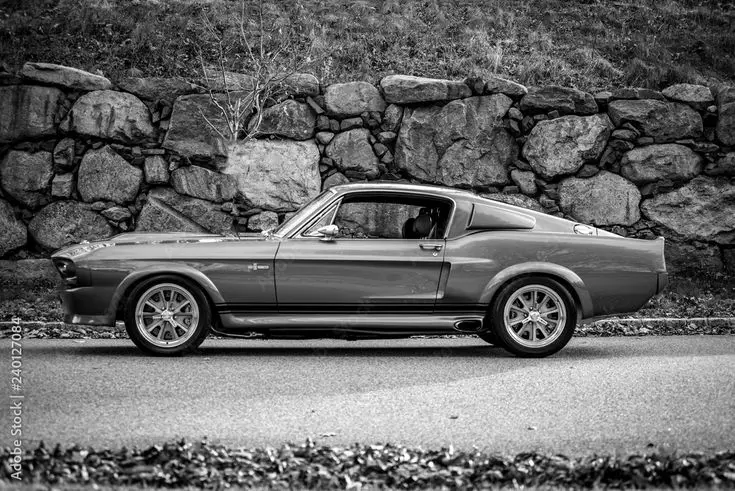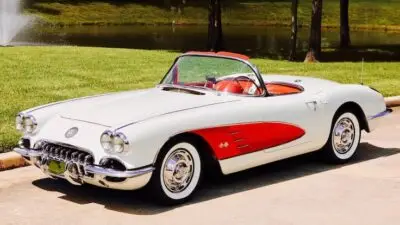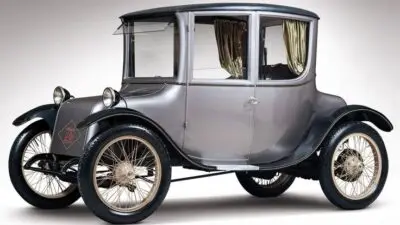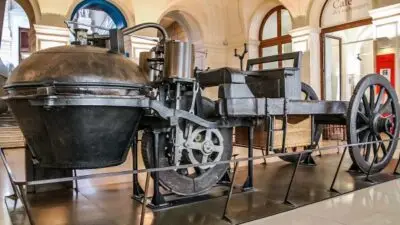Muscle cars have become iconic symbols of American automotive culture, representing power, speed, and style. This guide explores the evolution of muscle cars from their explosive beginnings in the 1960s to their modern-day revivals, showcasing their powerful engines and the passion of enthusiasts. Readers will discover how these vehicles make a statement on the road and have shaped automotive history.
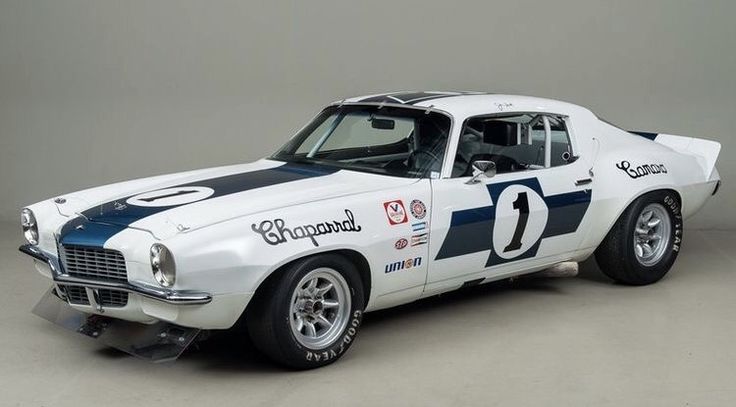
Throughout the decades, muscle cars have adapted to changing tastes and technological advancements. From the roaring engines of the golden age to sleek designs and innovative performance features in the 21st century, muscle cars continue to capture attention. This article dives into the major manufacturers, models, and the vibrant community that keeps this automotive passion alive.
By understanding the legacy and performance of muscle cars, one can appreciate why they remain a revered choice for car lovers around the world.
Key Takeaways
- Muscle cars have a rich history rooted in powerful engineering and American culture.
- The design and specifications of muscle cars have evolved to meet modern demands.
- An active community continues to celebrate and maintain these iconic vehicles.
The Birth of Muscle Cars
Muscle cars emerged in the 1960s, marking a significant shift in the American automotive landscape. These vehicles combined powerful engines with lightweight frames, capturing the spirit of speed and performance. Their impact extended beyond performance, influencing culture and car design for decades.
Origins and Cultural Impact
The origins of muscle cars trace back to the post-World War II era. This period saw a rise in consumer demand for affordable performance vehicles. Manufacturers like Pontiac, General Motors, and Ford began producing cars that catered to this demand.

The 1964 release of the Pontiac GTO is often credited with kickstarting the muscle car era. This vehicle combined a large V8 engine with a smaller chassis. Its success created a wave of competition among automakers.
Muscle cars became cultural icons, representing freedom and rebellion during the 1960s and 1970s. They were featured in movies, music, and media, shaping the identity of youthful drivers. Events like racing and car shows further solidified their status in American culture.
Defining Characteristics of Early Muscle Cars
Early muscle cars are characterized by their powerful engines, often V8 configurations, and aggressive styling. Manufacturers focused on performance enhancements that made these cars stand out on the road.
Key elements include:
- Engine Size: Typically, engines ranged from 350 to 500 cubic inches.
- Lightweight Design: Automakers used materials that reduced weight, improving speed and acceleration.
- Customization Options: Drivers could personalize engines, transmissions, and even aesthetics to suit their preferences.
The combination of power and performance made these cars not just fast but also thrilling to drive. Cars like the Ford Mustang and Chevrolet Camaro exemplify the muscle car style that continues to influence automotive design today.


The Golden Age: 1960s
The 1960s marked a transformative era for American automotive culture, characterized by the rise of powerful muscle cars. This decade introduced iconic models, fierce rivalries, and unmatched competition among manufacturers. Key players like Ford and General Motors reshaped the market, making their mark with standout vehicles such as the Mustang and Pontiac GTO.
Ford Mustang: An Icon Is Born
Launched in 1964, the Ford Mustang quickly symbolized the muscle car movement. Its sleek design and powerful engines attracted a wide range of buyers. Ford offered various options, including a V8 engine that provided exhilarating performance.
The Mustang’s affordability made it popular among young drivers. It became a cultural icon, featured in films and advertisements. With its success, the Mustang set the standard for future muscle cars, proving style and performance could coexist.
Pontiac GTO: The Father of Muscle Cars
The Pontiac GTO emerged in 1964, often credited as the first true muscle car. With a 389 cubic inch V8 engine, it combined size and power, delivering impressive performance right off the assembly line. Its bold styling and features appealed to enthusiasts.
General Motors took a risk by marketing the GTO as a performance vehicle. This gamble paid off, as it became a major success. Pontiac laid the groundwork for future muscle cars, influencing designs and engineering for years to come.
Competition and Rivalry Among Manufacturers
The 1960s saw intense competition among car manufacturers. Ford, Chevrolet, and Pontiac competed fiercely to dominate the muscle car market. Each brand aimed to outdo the others in power, style, and price.
Chevrolet responded with the Camaro in 1966, bringing another competitor into the ring. These rivalries sparked innovations and improvements, pushing manufacturers to enhance their engines and designs. This competitive drive led to the development of many legendary models throughout the decade.
Muscle Cars of the 1970s
The 1970s were a time of significant change for muscle cars. Drivers faced new regulations and a fuel crisis, causing manufacturers to adapt their iconic models. This decade saw the rise of notable vehicles and a shift towards greater comfort in driving experiences.
Adapting to Change: Fuel Crisis and Regulation
The fuel crisis of the 1970s dramatically impacted muscle car production. As gas prices soared, consumers shifted towards more fuel-efficient vehicles. This change forced manufacturers like Chrysler to rethink their designs.
In addition to the fuel crisis, new regulations on emissions and safety changed how cars were built. Performance took a hit as automakers added weight to meet safety standards. Power ratings on popular models dropped significantly. For example, the iconic Dodge Charger and Plymouth Barracuda saw reductions in horsepower during this time.
Notable Muscle Cars of the Decade
Several muscle cars defined the 1970s despite the challenges they faced. The Chevrolet Chevelle SS454 emerged as a standout performer. It was celebrated for its powerful V8 engine, making it an icon of speed.

The Plymouth Road Runner continued its legacy with aggressive styling and strong performance. It appealed to enthusiasts seeking power without breaking the bank. Similarly, the Chrysler E-body cars like the Cuda captured attention with their sleek designs and capable engines.
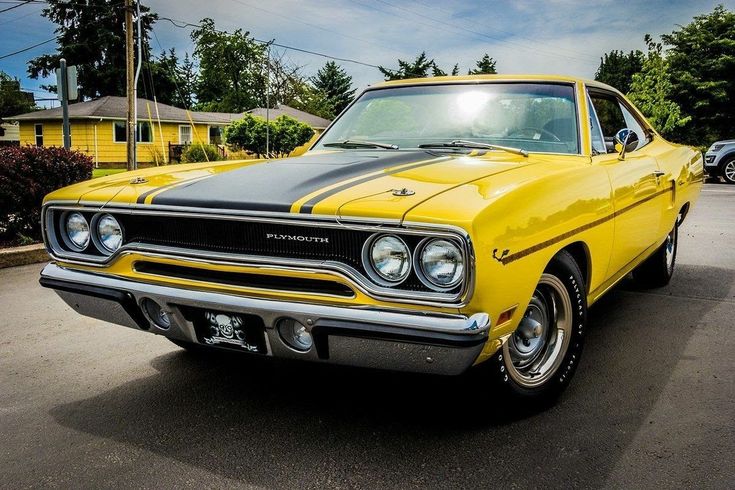

These models became symbols of resilience in a changing market. They showcased the spirit of muscle cars while adapting to new demands.
The Shift Towards Luxury and Comfort
As the decade progressed, muscle cars evolved to emphasize luxury and comfort. Manufacturers recognized that consumers wanted more than just raw power. The integration of advanced features became standard.
Cars like the Pontiac GTO and Chevrolet Camaro started to include plush interiors and modern technology. These changes enhanced the driving experience, appealing to a broader audience. The focus on comfort didn’t completely replace performance, but it marked a departure from pure muscle.
This decade set the stage for the transformation of muscle cars into more well-rounded vehicles, blending power with practicality. The legacy of these changes influenced future models and consumer expectations.
The Resurgence in the 1980s and 1990s
The 1980s and 1990s marked an important return for muscle cars. This period saw the rise of modern muscle vehicles influenced by technology and a cultural passion for classic models. Key models like the Mustang and IROC-Z Camaro became symbols of this revival.

The Rise of Modern Muscle Cars
In the 1980s, automakers began to reintroduce muscle cars to captivate audiences. The Ford Mustang was revamped, coming out with models that offered both style and power. The Chevrolet Camaro, particularly the IROC-Z, also gained attention with its sleek design and powerful engine.
These vehicles appealed to younger generations, combining nostalgic designs with modern performance. They featured improved acceleration and handling while still embracing the muscle car ethos. Brands put significant efforts into marketing these cars, fostering a sense of excitement around American automotive culture.
Technological Advancements and Muscle Cars
The resurgence of muscle cars coincided with advancements in automotive technology. Engine performance greatly improved due to innovations like fuel injection and turbochargers. These changes boosted horsepower while maintaining or even improving fuel efficiency.
For example, the Chevrolet Nova offered solid options with a balance of power and agility. Many muscle cars of this era incorporated better suspension systems, enhancing driving experience and handling. These technological benefits not only attracted enthusiasts but also made muscle cars more accessible to everyday drivers.

Cultural Revival of Classic Models
The cultural landscape of the 1980s and 1990s played a significant role in the muscle car resurgence. Movie franchises and media began to highlight classic models, fueling nostalgia among fans. Cars like the Mustang and Camaro were prominently featured in popular films and music, sparking interest.
Car clubs and enthusiast groups emerged, encouraging people to restore and drive classic muscle cars. Events like car shows celebrated these vehicles, strengthening their community presence. This revival transformed the perception of muscle cars from merely vehicles to icons of American culture and history.
21st-Century Muscle: 2000s to Present
The 21st century has seen a revival of muscle cars, merging classic design with modern technology. Manufacturers like Chevrolet and Dodge have focused on performance and heritage, appealing to a new generation of enthusiasts.
Modern Classics: Reimagining the Muscle Car
In the 2000s, iconic models such as the Chevrolet Camaro and Dodge Challenger experienced significant revivals. The new Camaro reintroduced its classic styling while offering advanced engines, including the powerful V8. Similarly, the Challenger, with its retro design, brought back the thrill of the muscle car era.

While classic names returned, new entrants like the Dodge Super Bee showcased powerful engines and modern technology. These cars balanced nostalgia with contemporary performance features, attracting both old-school fans and new buyers.

Muscle Cars in Motorsports
Today, muscle cars are not just street legends; they compete in various motorsports, including drag racing and NASCAR. The Challenger and Camaro are frequently modified for high-stakes competitions, showcasing their powerful engines.
The growth of racing series featuring muscle cars brings exposure and excitement. These events reignite passion for American muscle, drawing crowds and boosting sales. The success of these cars in motorsports further solidifies their place in automotive history.
The Influence of Technology and the Future
Technological advances have reshaped the muscle car landscape. Features like fuel injection, advanced aerodynamics, and lightweight materials have enhanced performance.
These improvements allow for lower emissions and better fuel efficiency without sacrificing power. As the market moves towards electric vehicles, the challenge will be maintaining the muscle car’s essence. Manufacturers are exploring hybrid options, blending power with sustainability, ensuring these legends adapt to future demands while retaining their fierce character.
Major Manufacturers and Models
Muscle cars have been defined by several key manufacturers, each contributing iconic models. These manufacturers brought distinct features and innovations that shaped the muscle car era. The following sections explore the contributions of Ford, General Motors, Chrysler, and others.
Ford’s Legacy in Muscle Cars
Ford played a major role in the muscle car revolution with its powerful engines and sporty designs. The introduction of the 1964 Ford Mustang set a new standard for affordable performance. It combined style and speed, appealing to a younger audience.

Another important model was the Ford Torino, which gained popularity in the late 1960s. Its high-performance variants, like the Cobra Jet, showcased Ford’s commitment to racing and performance. The Ford Mercury Cougar also attracted attention for its upscale design and potent engine options.


Ford’s dedication to muscle cars continued with the Ford Shelby GT350 and later, the GT500. These models emphasized performance and handling, solidifying Ford’s status in the muscle car scene.


General Motors: Chevrolet and Beyond
General Motors, particularly through Chevrolet, produced some of the most celebrated muscle cars. The Chevrolet Camaro, introduced in 1966, was a direct competitor to Ford’s Mustang. Its performance options, like the Z/28 and SS, attracted enthusiasts and racers.
The Chevrolet Impala is another memorable model, especially the 1967 version, known for its powerful V8 engines. It became synonymous with American muscle, offering both power and comfort.

Pontiac, also under GM, created the legendary GTO. Often dubbed the original muscle car, it featured bold designs and strong performance, paving the way for future models. Other notable GM models include the Pontiac Firebird and Oldsmobile 442, which added to the fierce competition in the muscle car market.


Chrysler, AMC, and Other Contributors
Chrysler made significant contributions to the muscle car genre through its Dodge and Plymouth divisions. The Dodge Charger, introduced in 1966, became famous for its style and powerful engines, including the famed HEMI options.

Plymouth’s Barracuda was another early contender, known for its sleek design and performance. Later, the Plymouth Road Runner offered affordable speed, capturing the attention of enthusiasts.

AMC entered the scene with the Javelin and AMX, which were designed to compete with the big names. The Javelin offered unique styling and solid performance, appealing to a niche market.


Each of these manufacturers left a lasting mark on the muscle car landscape, shaping how enthusiasts view performance and style in cars today.
Performance and Specifications
Muscle cars are known for their impressive performance and specifications, making them a favorite among enthusiasts. Key aspects include horsepower and torque metrics, as well as the handling and driving dynamics that contribute to their appeal.
Horsepower and Torque Metrics
Horsepower is often the first thing that comes to mind when discussing muscle cars. Many models feature powerful V8 engines, which are designed to deliver high horsepower and torque.
- Typical Horsepower Range: Many muscle cars range from 300 to over 700 horsepower.
- Torque Figures: Torque can be equally impressive, often exceeding 400 lb-ft in high-performance models.
This combination allows for excellent acceleration. For example, the time it takes to go from 0 to 60 mph can be as low as 3.5 seconds in top models. Enthusiasts value these metrics as they speak to a car’s capability on the road and track.
Handling and Driving Dynamics
Handling and driving dynamics set muscle cars apart from typical performance cars. While muscle cars emphasize straight-line speed, they also feature advanced suspension systems for improved handling.
- Suspension Systems: Many use independent front and multi-link rear suspensions to balance comfort and performance.
- Weight Distribution: A lower center of gravity helps with cornering stability.
Drivers often note the thrill of the ride, thanks to responsive steering and solid braking systems. These features create an engaging driving experience that resonates with those who love speed and performance.
Evolution of Design and Style
Muscle cars have undergone significant changes in design and style since their inception. These evolution points reflect both technological advancements and cultural shifts in automotive aesthetics. Key areas of focus include exterior aesthetics and interior features.
Exterior Aesthetics and Trends
The exterior design of muscle cars has always been characterized by a bold and aggressive stance. Early models, like the classic Chevelles and Ford Torinos, featured long hoods and short rear decks. This design emphasized performance and speed.
In the 1970s, muscle cars started to embrace a more streamlined look due to changing regulations and consumer preferences. By the 1990s, designs became even more refined. Streamlined shapes and aerodynamic features dominated the market. The blending of style with functionality marked this era.
Today’s muscle cars maintain a retro vibe while incorporating modern elements. LED headlights and sculpted body lines are common. The balance between nostalgic and contemporary design continues to attract enthusiasts.
Interior Features and Innovations
Inside muscle cars, the focus has shifted over the decades from basic functionality to comfort and technology. Early interiors were often sparse, with minimal focus on aesthetics. Plain benches and simple dashboards were standard.
As time progressed, muscle car interiors began to modernize. The introduction of high-quality materials and advanced technology became more prominent. Features like touchscreen displays, premium sound systems, and customizable lighting now enhance the driving experience.
In recent models, such as the updated Chevelle and modern Mustangs, interior designs reflect a blend of vintage appeal and cutting-edge technology. Attention to detail, ergonomic seating, and driver-centric layouts have become standard, redefining what it means to drive a muscle car.
Enthusiast Culture and Community
The culture surrounding muscle cars is vibrant and significant. Car shows and gatherings provide a space for enthusiasts to connect, while restoration and modification trends reflect the passion for these vehicles.
Car Shows and Muscle Car Gatherings
Car shows are a cornerstone of muscle car culture. Events often feature a variety of muscle cars like Camaros, Mustangs, and GTOs. Enthusiasts gather to showcase their vehicles, share stories, and learn from one another.
These gatherings can range from local meet-ups to large national events. Participants often engage in friendly competitions for best-in-show awards. Many shows also include vendors selling parts and merchandise, creating a lively marketplace for car enthusiasts.
Attendees often value camaraderie, forming friendships that last beyond the events. The car community thrives on shared experiences and a mutual love for muscle cars.
Restoration and Modification Trends
Restoration and modification trends play a vital role in muscle car culture. Many enthusiasts take pride in restoring classic muscle cars to their original glory. They focus on authenticity with original parts, paint, and finishes.
On the modification side, creativity flourishes. Many owners customize their cars with modern upgrades while maintaining classic aesthetics. Popular modifications include performance enhancements, better suspension systems, and updated interiors.
Social media platforms and forums serve as gathering places for sharing tips and showcasing projects. The exchange of ideas fuels innovation in restoring and modifying muscle cars, strengthening the community bond.
Preservation and Maintenance
Proper preservation and maintenance are crucial for keeping muscle cars in optimal condition. This ensures that their unique features and performance remain intact, allowing enthusiasts to enjoy them for years to come.
Maintaining Muscle Car Heritage
Maintaining the heritage of muscle cars, like Mustangs, involves regular inspections and careful handling. Owners should check fluid levels, tire pressure, and the condition of belts and hoses frequently. Using high-quality oil and fuel is essential to preserve engine performance.
Rust can be a significant issue. Regularly washing the car and applying a protective wax helps prevent corrosion. For classic models, consider using interior and exterior covers to shield against environmental damage. Keeping documentation of repairs and restorations also adds value and maintains the car’s history.
Tips for Long-Term Storage and Care
The environment is critical when storing a muscle car. Select a clean, dry location away from direct sunlight. Use a breathable car cover to protect it from dust and moisture without trapping humidity.
Before storage, conduct a thorough cleaning, inside and out. Fill the gas tank to prevent moisture build-up and add a fuel stabilizer. Then, disconnect the battery to avoid drainage.
Regularly check the car’s condition during storage. A monthly inspection helps catch any potential issues early. This kind of attention ensures the car remains in top shape for future drives.
Frequently Asked Questions
This section addresses common questions about muscle cars. It covers their defining traits, performance changes over time, key models, factors affecting the industry, and comparisons between modern and classic vehicles.
What are the defining characteristics of muscle cars?
Muscle cars are known for their powerful engines, typically V8 configurations, and a focus on straight-line speed. They often feature bold styling with aggressive lines and vibrant colors. These vehicles emphasize performance at an affordable price, making them accessible to a wider audience.
How has muscle car performance evolved since their inception?
Muscle car performance has significantly advanced since their debut in the late 1940s. Early models like the Oldsmobile Rocket 88 laid the groundwork with their robust engines. Today’s muscle cars have improved aerodynamics, better fuel efficiency, and refined handling thanks to advancements in engineering and technology.
What are some iconic muscle car models from the 1960s and 1970s?
The 1960s and 1970s produced several iconic muscle cars. The Pontiac GTO, introduced in 1964, is often credited as the first true muscle car. Other notable models include the Ford Mustang, Chevrolet Camaro, and Dodge Charger. Each of these cars has become a symbol of American automotive culture.
How did the oil crisis impact the muscle car industry?
The oil crisis of the 1970s greatly affected muscle car production and sales. Rising gas prices led to a decline in consumer interest in fuel-thirsty V8 vehicles. Automakers shifted their focus toward smaller, more fuel-efficient cars, marking a significant change in the industry.
What led to the resurgence of muscle cars in the modern era?
Several factors led to the resurgence of muscle cars in the 21st century. Nostalgia for classic models and a renewed interest in performance vehicles has driven demand. Automakers have responded by reintroducing classic names with modern technology, appealing to both new and old fans.
How do modern muscle cars compare to their classic predecessors in terms of technology and design?
Modern muscle cars incorporate advanced technology that enhances performance and safety. Features like adaptive suspension, advanced infotainment systems, and high-tech safety options are now standard. Classic muscle cars focused primarily on raw power, while today’s models balance performance with comfort and efficiency.
